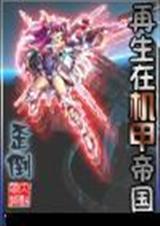再生之软件帝国-第6章
按键盘上方向键 ← 或 → 可快速上下翻页,按键盘上的 Enter 键可回到本书目录页,按键盘上方向键 ↑ 可回到本页顶部!
————未阅读完?加入书签已便下次继续阅读!
ain backwards patibility, Windows 95 doesn’t impose the same memory protection and security measures that NT does and so suffers from much worse reliability。 Despite being remarkable similar in function to OS/2 Warp (produced by IBM and Microsoft several years earlier, but marketed by IBM), Windows ’95 has proved very popular。
1996 Windows ’95 OSR2 (OEM System Release 2) was released … partly to fix bugs found in release 1 … but only to puter retailers for sale with new systems。 There were actually two separated releases of Windows 95 OSR2 before the introduction of Windows ’98, the second of which contained both USB and FAT32 support … the main selling points of Windows ’98。 FAT32 is a new filing system that provides support for disk paritions bigger than 2。1GB and is better at coping with large disks (especially in terms of wasted space)。
1996 … June 9 Linux 2。0 released。 2。0 was a significant improvement over the earlier versions: it was the first to support multiple architectures (originally developed for the Intel 386 processor, it now supported the Digital Alpha and would very soon support Sun SPARC many others)。 It was also the first stable kernel to support SMP, kernel modules, and much more。
1998 … June 25 Microsoft released Windows ’98。 Some U。S。 attorneys tried to block it’s release since the new O/S interfaces closely with other programs such as Microsoft Inter Explorer and so effectively closes the market of such software to other panies。 Microsoft fought back with a letter to the White House suggesting that 26 of it’s industry allies said that a delay in the release of the new O/S could damage the U。S。 economy。 The main selling points of Windows ’98 were it’s support for USB and it’s support for disk paritions greater than 2。1GB。
1999 … Jan 25 Linux Kernel 2。2。0 Released。 The number of people running Linux is estimated at over 10million, making it an not only important operating system in the Unix world, but an increasingly important one in the PC world。
2000 … Feb 17 Offical Launch of Windows 2000 … Microsoft’s replacement for Windows 95/98 and Windows NT。 Claimed to be faster and more reliable than previous versions of Windows。 It is actually a descendant of the NT series, and so the trade…off for increased reliability is that it won’t run some old DOS…based games。 To keep the home market happy Microsoft have also released Windows ME, the newest member of the 95/98 series。
2001 … Jan 4 Linux kernel 2。4。0 released。
2001 … March 24 Apple released MacOS X。 At it’s heart is ‘Darwin’, an Open Source kernel based on FreeBSD。 Using this MacOS X finally gives Mac users the stabilty benifits of a protected memory architecture along many other enhancements, such as preemptive multitasking。 The BSD base also makes porting UNIX applications to MacOS easier and gives Mac users a fully featured mand line interface alongside their GUI。
2001 … October 25 Microsoft released Windows XP … the latest version of their Windows operating system。 Based on the NT series kernel, it is intended to bring together both the NT/2000 series and the Windows 95/98/ME series into one product。 Of, course, it was originally hoped that this would happen with Windows 2000 。。。 so only time will tell if Microsoft have suceeded with Windows XP。
Stephen White
正文
维基百科,自由的百科全书。
操作系统的历史在某种意义上来说也是计算机的历史。操作系统提供对硬件控制的调用和应用程序所必需的功能。
背景
早期的计算机没有操作系统。用户有单独的机器,他(她)会带着记录有程序和数据的卡片(punch card)或較;後期的打孔纸带去操作机器。程序读入机器后,机器就开始工作直到程序停止。由于程序难免有误,所以机器通常都会中途崩溃。程序一般通过控制板的开关和状态灯来调试。据说图灵能非常熟练地用这种方法操作Manchester Mark I机器。
后来,机器引入帮助程序输入输出等工作的代码库。这是现代操作系统的起源。然而,机器每次只能执行一件任务。在英国剑桥大学,这些任务的磁带从前是排成一排挂在衣钩上的,衣钩的颜色代表任务的优先级。
概念意义上的操作系统和通俗意义上的操作系统差距越来越大。通俗意义上的操作系统为了方便而把最普通的包和应用程序的集合包括在操作系统内。随着操作系统的发展,一些功能更强的“第二类”操作系统软件也被包括进去。在今天,没有图形界面和各种文件浏览器已经不能称为一个真正的操作系统了。
大型机时代
早期的操作系统非常多样化,生产商生产出针对各自硬件的系统。每一个操作系统都有很不同的命令模式、操作过程和调试工具,即使它们来自同一个生产商。最能反映这一状况的是,厂家每生产一台新的机器都会配备一套新的操作系统。这种情况一直持续到二十世纪六十年代IBM公司开发了System/360系列机器。尽管这些机器在性能上有明显的差异,但是他们有统一的操作系统—;—;OS/360(在开发OS/360过程中遇到的问题在Fred Brooks写的软件工程经典之作《人月神话》中详细地叙述了)
OS/360的成功陆续地催化出MFT、MVT、SVS、MVS、MVS/XA、MVS/ESA、OS/390和z/OS。
小型机和UNIX的崛起
UNIX操作系统是由AT&;T公司开发出来的。由于它的早期版本是完全免费的,可以轻易获得并随意修改,所以它得到了广泛的接受。后来,它成为开发小型机操作系统的起点。由于早期的广泛应用,它已经成为的操作系统的典范。不过,它始终属于AT&;T公司,只有那些能负担的起许可费的企业才用得起,这限制了它的应用范围。
早期的操作系统是可以被用户软件所利用的功能的集合。一些有能力的公司发展更好的系统,但他们不支持其他公司硬件的特性。
60年代末70年代初,几种硬件支持相似的或提供端口的软件可在多种系统上运行。早期的系统已经利用微程序来在他们的系统上实现功能。事实上,除了360/165和360/168外,360/40之后的大部分360系列的机器都实行微程序设计。
个人计算机时代:Apple, DOS 和以后
微型处理器的发展使计算机的应用普及至中小企及个人爱好者。而计算机的普及又推动了硬件组件公共接口的发展(如S…100,SS…50,Apple II,ISA和PCI总线),并逐渐地要求有一种“标准”的操作系统去控制它们。在这些早期的计算机中,主要的操作系统是8080/8085/Z…80 CPU用的Digital Research’s CP/M…80,它建立在数码设备公司(Digital Research)几个操作系统的基础上,主要针对PDP…11架构。在此基础上又产生了MS…DOS(或IBM公司的PC…DOS)。这些计算机在ROM(只读存储器)都有一个小小的启动程序,可以把操作系统从磁盘装载到内存。IBM…PC系列的BIOS是这一思想的延伸。自1981年第一台IBM…PC诞生以来,BIOS的功能得到不断地增强。
随着显示设备和处理其成本的降低,很多操作系统都开始提供图形用户界面。如:许多UNIX提供的X Window一类的系统、微软的Windows系统、苹果公司的Mac系统和IBM公司的OS/2等。最初的图形用户界面是由Xerox Palo Alto研究中心70年代初期研发出来的,之后被许多公司模仿,继承发展。
操作系统列表
早期操作系统(专利保护)
TRS…DOS,ROM OS’s
TI99…4
modore PET, 64, 和 VIC…20,
第一套IBM…PC
Apple
Sinclair Micro和QX等
非Unix商业操作系统
CPM操作系统
MP/M…80
UCSD P…system
Mini…FLEX
SSB…DOS
CP/M…86
DR…DOS
FreeDOS
MS…DOS
PC…DOS
Mach
Multics
OS…9
Unix及类似系统
UNIX
微软Xenix
Cromix
UNIflex
OS…9
IBM的AIX
BSD
FreeBSD
BSD
OpenBSD
Digital UNIX,即之后康柏Tru64
DNIX
HP的HP…UX
GNU/Hurd
SGI的IRIX
Linux(或称GNU/Linux)
MacOS X
OSF/1
SCO的SCO UNIX
Sun的SunOS,即之后的Solaris
System V
Ultrix
UniCOS
LindowsOS
OS/390
z/OS
Syllable
其他
Acorn
RiscOS
Arthur
Amiga
AmigaOS
Atari ST
TOS
MultiTOS
MiNT
苹果电脑(Apple/Macintosh)
Apple DOS
ProDOS
Mac OS
Mac OS X
Be
BeOS
BeIA
Digital/康柏(paq)
AIS
OS…8
RSTS/E
RSX…11
RT…11
TOPS…10
TOPS…20
VMS (后更名为OpenVMS)
IBM
OS/2
AIX
OS/400
OS/390
VM/CMS
DOS/VSE
OS/360
MFT
MVT
SVS
MVS
TPF
ALCS
z/OS
微软(Microsoft)
MS…DOS
Xenix
Windows 1。0
Windows 3。1
Windows 95
Windows 98
Windows ME
Windows Longhorn
Windows NT
Windows 3。5
Windows 4
Windows 2000
Windows XP
Windows Server 2003
Novell
Ware
NeXT
NeXTStep (即之后的Mac OS X)
Plan 9
Inferno
Prime puter
Primos
西门子
BS2000
个人电子助理(PDA)操作系统
Palm OS
Pocket PC
EPOC
Microsoft Windows CE
Operating systems timeline
来源:http://。encyclopedia4u。/
This article presents a timeline of events in the history of puter operating systems from 1960 to 2003。 For a narrative explaining the overall developments, see the related History of puting。
1961
CTSS
1964
OS/360 (announced)
1965
Multics (announced)
OS/360 (shipped)
Tape Operating System (TOS)
1966
MS/8
1967
CP/CMS
ITS
WAITS
1969
ACP (IBM)
TENEX
Unix
1970
DOS/BATCH 11 (PDP…11)
1971
/A>;
1972
MFT
MVT
RDOS
SVS
VM/CMS
1973
Alto OS
RSX…11D
RT…11
VME
1974
MVS (MVS/XA)
1976
/A>; TOPS…20
1978
Apple DOS 3。1 (first Apple OS)
TripOS
VMS
1979
Apple DOS 3。2
1980
Apple DOS 3。3
OS…9
QDOS
SOS
XDE (Tajo) (Xerox Development Environment)
Xenix
1981
MS…DOS
1982
SunOS (1。0)
Ultrix
1983
Lisa OS
Coherent
ProDOS
1984
Macintosh OS (System 1。0)
QNX
UniCOS
1985
AmigaOS
Atari TOS
MIPS OS
Microsoft Windows 1。0
1986
GS…OS
HP…UX
1987
Arthur
IRIX (3。0 is first SGI version)
Minix
/A>; (1。0) Microsoft Windows 2。0
1988
A/UX (Apple puter)
LynxOS
MVS/ESA
OS/400
1989
AIX
NeXTSTEP (1。0)
RISC OS
SCO Unix (release 3)
1990
BeOS (v1)
O/A>;
1991
Linux
1992
Solaris (2。0 is first not called SunOS)
Windows 3。1
1993
Plan 9
FreeBSD
BSD
Windows NT 3。1 (First version of NT)
1995
Digital Unix (aka Tru64 )
OpenBSD
OS/390
Windows 95
1997
Mac OS 7。6 (first officially…named Mac OS)
1998
Windows 98





